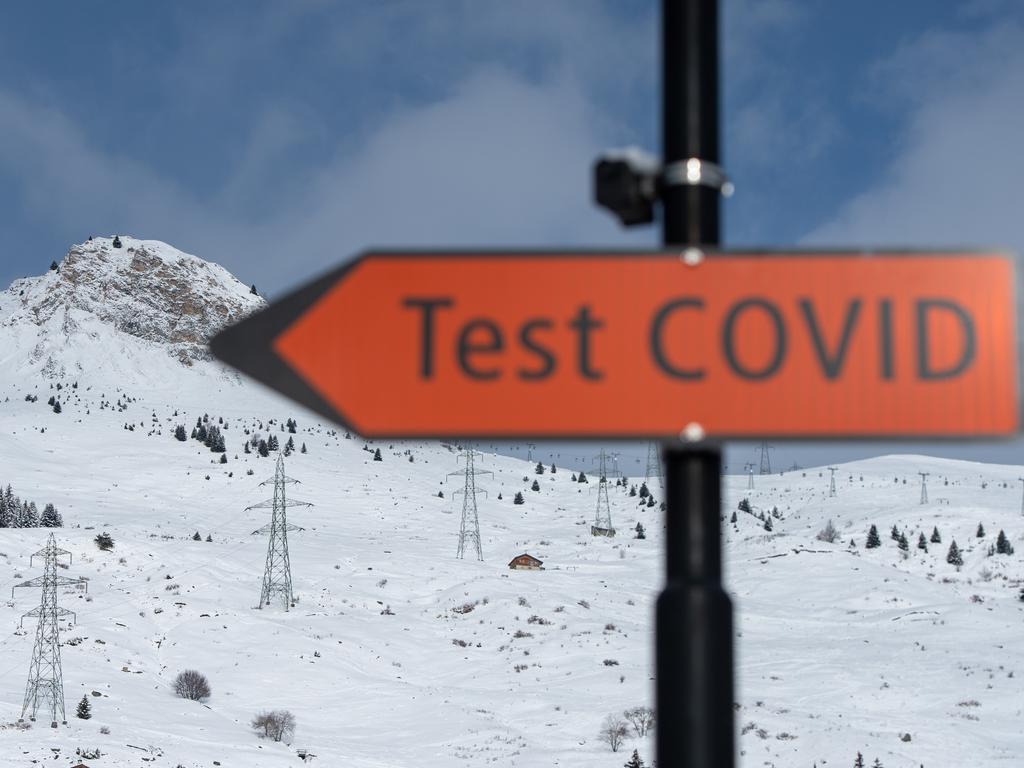Smug, ignorant: ABC’s Covid-19 coverage sells public short


On January 23, ABC TV’s 7.30 stand-in host and political editor Laura Tingle interviewed a three-person panel for 14 minutes, almost half the program. Tingle presented a bleak medical and economic assessment of the nation’s Covid response. Many ABC radio daily news programs presented similarly dire reports about Covid deaths, hospitalisations and infections over the summer break. And ABC health editor Norman Swan has resumed his regular Coronacast in 2023.
Anyone prepared to criticise the nation’s response to Covid gets a free pass and is rarely challenged. It is much harder to find ABC interviews during which people argue the nation cannot afford more lockdowns, businesses cannot survive more closures, and that Australia’s pandemic performance has been among the world’s best.
The ABC aired little that was positive about the pandemic responses of the Morrison government, which left us with a per capita Covid fatality rate far below most other countries. Even after the reopening of our borders and businesses, the death rate per million here is still lower than in the ABC’s preferred jurisdiction, New Zealand. But despite the comparatively few Covid-related deaths in Australia in the first two years of the pandemic – there were 2237 according to the Australian Bureau of Statistics – Tingle focused on the 15,000 who had died here last year after the arrival of the Omicron strain and the lifting of most Covid restrictions by the Labor government last September.
Last Thursday, deaths per million in Australia stood at 722 compared with 777 in NZ. Most comparable European nations and the US have recorded Covid death rates since 2020 of about 3000 people per million. Even Canada, which is often compared with Australia, has reported death rates of 1319 per million. Taiwan, another ABC favourite with a similar population to Australia’s, has a rate: 705 per million.
This column travelled to Italy and Greece in August and September last year and, apart from mask wearing on Italian trains, saw little evidence of Covid paranoia. Most internal European flights were mask free.
Yet Tingle and her executive producer apparently could find no one to balance the gloom of their panellists. Experienced journalists know such guest selection is designed to produce a specific result and 7.30 got what it wanted. But why is it so keen to publish the bleakest views?
Leading the panel was a member of the OzSage group of medical experts and academics that has dominated pandemic opinion on the public broadcaster despite the publication here and elsewhere of pieces challenging the extreme “Covid exceptionalism” of OzSage members.
When 7.30 chose to interview Brendan Crabb from the Burnet Institute in Melbourne it knew exactly what it would be getting – views in line with the Victorian government’s position in the first two years of the pandemic. The Burnet Institute advised Victoria’s Health Department.
Why no balance from someone less extreme, such as federal chief medical officer Paul Kelly, former deputy CMO Nick Coatsworth or Deakin University chair of epidemiology Catherine Bennett? All are highly credentialed but without OzSage’s baggage.
Crabb said the federal government’s strategy was to let the virus rip while trying to protect the vulnerable and elderly. This needed to change to an anti-transmission strategy.
Richard Denniss, an economist from the left-wing Australia Institute, thought the main impact of Covid on the economy was the cost to business of absenteeism. Tingle did not press him for comment on the budget deficit and inflation problems damaging most of the world as governments struggle to pay for Covid lockdown expenditure and loose monetary policy.
No one on 7.30 spoke for the vast majority of Australians who have had Covid and recovered quickly, including older Australians who remain happy to risk Covid by taking cruise ship holidays. They know if they are healthy, vaccinated and previously have been infected the virus will probably not be worse than a cold.
Crabb criticised the vaccine booster reticence of many Australians. Tingle asked no questions about whether people had a reason to be sceptical of vaccination, given so many people caught Covid last year soon after their third dose.
This is what people dislike about ABC current affairs: its reporters’ smug determination to ignore the experience of tens of millions of Australians who have had Covid, recovered and decided they are not taking fourth and fifth doses. Why allow haematologist Nada Hamad – who is not an epidemiologist but a long Covid sufferer – to amp up fears about multiple infections?
It is all too similar to the ABC’s denunciation of participants at an Alice Springs meeting last month as “white supremacists”. Why sneer at ordinary people’s views? The ABC should follow the example of Sky News Australia host Chris Kenny, who has criticised vaccine mandates such as those that still apply to Victorian and NSW firefighters. We now know vaccines do not stop the spread of the disease but reduce the severity of a recipient’s infection. What possible reason to continue mandates?

I have had two AstraZeneca shots, one Pfizer and one Novavax last August before flying to Rome. Novavax was chosen because it is a conventional vaccine rather than an mRNA dose.
On February 5 The Wall Street Journal published an excellent piece, “Why Vaccine Skepticism is Growing on the Right”, that argued the US government’s “contempt for the laity” helps explain growing public distrust, particularly on the political right. “Public health authorities have … fuelled distrust by overselling the benefits of vaccines, pushing them on children who are at low risk for serious illness, mandating shots while playing down potential side effects and smearing those who raise concerns as spreading misinformation,” it reads.
The piece cites recently released emails that reveal in mid-2021 some officials from the US Food and Drug Administration warned of potential Pfizer side effects for seniors, including pulmonary embolism, acute myocardial infarction, immune thrombocytopenia and disseminated intravascular coagulation. This is all separate from known risks of myocarditis and pericarditis in young males.
Only last month did the FDA and US Centres for Disease Control and Prevention finally publish results on risks for over-65s. While the study examined the four conditions above, it “showed a safety signal only” for pulmonary embolism, the WSJ said. The study says it does not establish a causal relationship between pulmonary embolism and vaccination but, as the WSJ says, its “most noteworthy revelation, however, was that some signals were first detected in February 2021”.
“If the FDA could review Pfizer’s vaccine application in only a few months, it shouldn’t have taken nearly two years to investigate and publish a study on potential side effects,” the WSJ said. Exactly. And it should not be beyond the ABC to ask questions in the interests of ordinary Australians. The FDA study was published a full month before the 7.30 episode above.
As the WSJ concluded: “Information about potential side effects is inevitably emerging in viral videos and Twitter threads. It would be better for Americans to hear it from their government.”







The ABC’s showpiece current affairs programs remain wedded to catastrophist reporting of the Covid-19 pandemic, even if the public sees it differently.